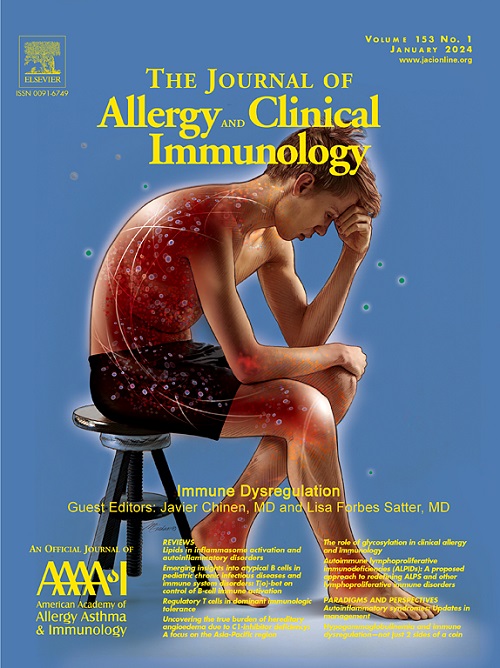Techniques and analytic workflow for spatial transcriptomics and its application to allergy and inflammation
IF 11.4
1区 医学
Q1 ALLERGY
引用次数: 0
Abstract
Spatial profiling, through single-cell gene-level expression data paired with cell localization, offers unprecedented biologic insights within the intact spatial context of cells in healthy and diseased tissue, adding a novel dimension to data interpretation. This review summarizes recent developments in this field, its application to allergy and inflammation, and recent single-cell resolution platforms designed for spatial transcriptomics with a focus on data processing and analyses for efficient biologic interpretation of data. By preserving spatial context, these technologies provide critical insights into tissue architecture and cellular interactions that are unattainable with traditional transcriptomics methods, such as revealing localized inflammatory cell network in atopic dermatitis and T-cell interactions in the lung in chronic obstructive pulmonary disease. Spatial profiling offers opportunities for discovering novel biomarkers, defining compartmentalization of immune responses within tissues and individual diseases, and accelerating novel discoveries toward a greater understanding of fundamental disease mechanisms and, eventually, toward the development of future targeted therapies.
空间转录组学技术和分析工作流程及其在过敏和炎症中的应用。
空间分析通过单细胞基因水平表达数据与细胞定位相结合,在健康和病变组织细胞的完整空间背景下提供了前所未有的生物学见解,为数据解释增加了一个新的维度。本文综述了该领域的最新进展,其在过敏和炎症中的应用,以及最近为空间转录组学设计的单细胞分辨率平台,重点是数据处理和分析,以便有效地对数据进行生物学解释。通过保留空间背景,这些技术提供了对组织结构和细胞相互作用的关键见解,这是传统转录组学方法无法实现的,例如揭示特应性皮炎的局部炎症细胞网络,以及慢性阻塞性肺疾病肺中的t细胞相互作用。空间分析为发现新的生物标志物,定义组织和个体疾病内免疫反应的区隔化,加速新发现,更好地理解基本疾病机制,并最终发展未来的靶向治疗提供了机会。
本文章由计算机程序翻译,如有差异,请以英文原文为准。
求助全文
约1分钟内获得全文
求助全文
来源期刊
CiteScore
25.90
自引率
7.70%
发文量
1302
审稿时长
38 days
期刊介绍:
The Journal of Allergy and Clinical Immunology is a prestigious publication that features groundbreaking research in the fields of Allergy, Asthma, and Immunology. This influential journal publishes high-impact research papers that explore various topics, including asthma, food allergy, allergic rhinitis, atopic dermatitis, primary immune deficiencies, occupational and environmental allergy, and other allergic and immunologic diseases. The articles not only report on clinical trials and mechanistic studies but also provide insights into novel therapies, underlying mechanisms, and important discoveries that contribute to our understanding of these diseases. By sharing this valuable information, the journal aims to enhance the diagnosis and management of patients in the future.

 求助内容:
求助内容: 应助结果提醒方式:
应助结果提醒方式:


